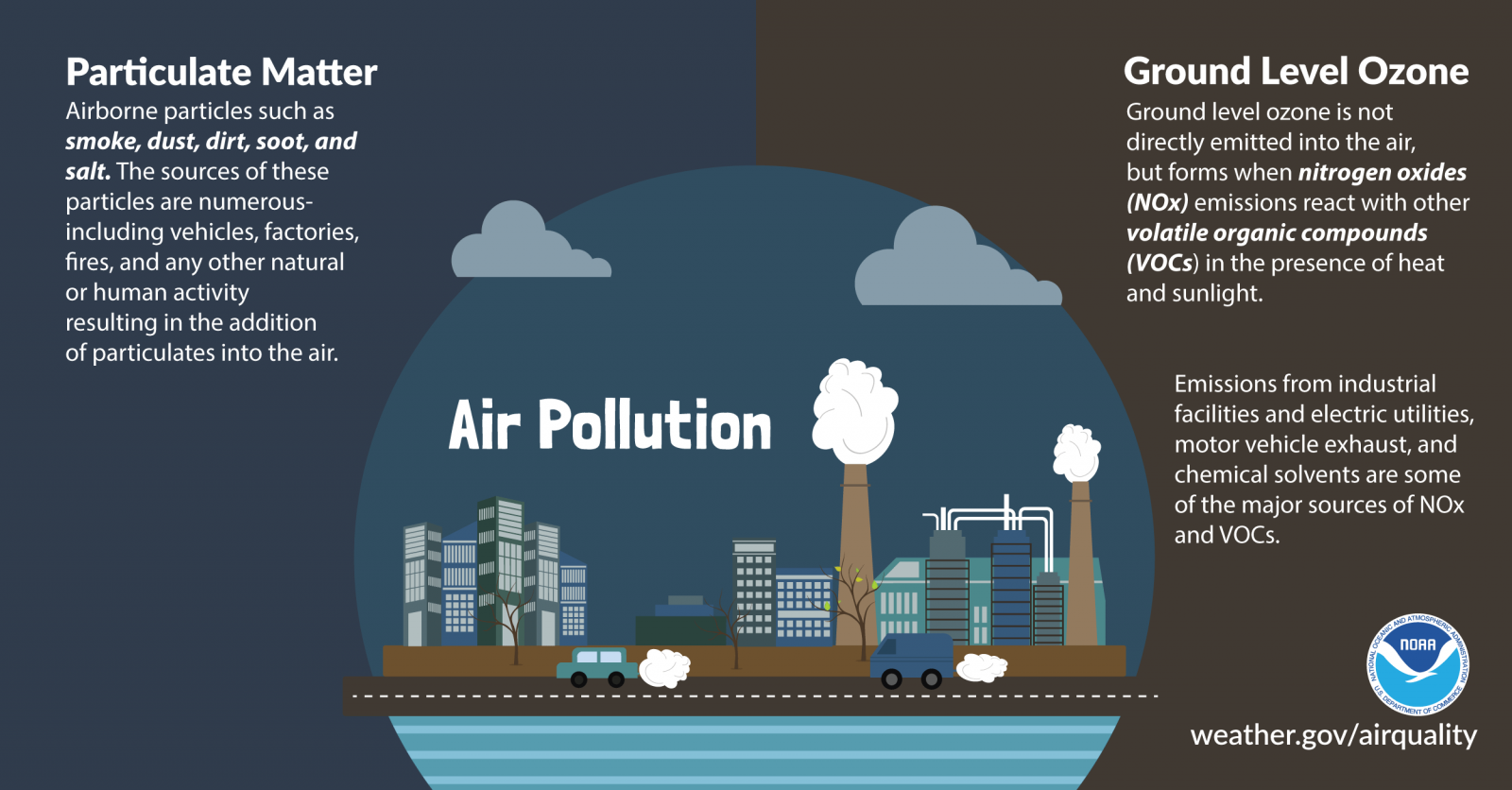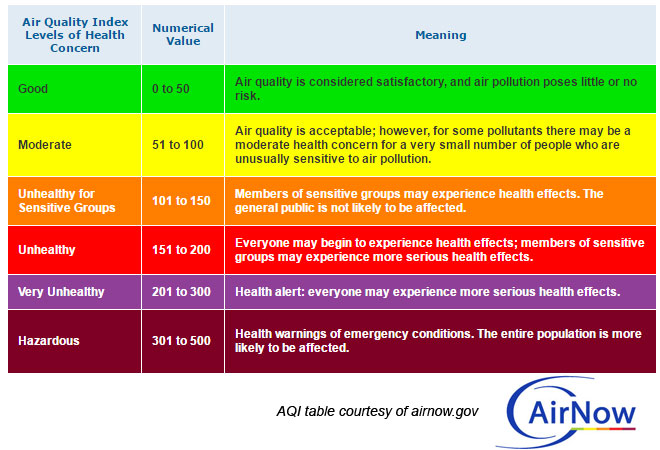
When you look outside and notice that the sky is hazy and visibility is poorer than usual, this can mean that air quality has degraded and become dangerous. Sometimes, air pollution is not even seen. Our air quality is based on the concentration of pollutants present in the air - both human-made and from natural sources.
Human-made air pollution includes vehicle emissions and fumes from power plants and refineries. Nature’s sources for air pollution include smoke from wildfires (which are still often human-caused), gas from volcanic eruptions, and methane.

The National Oceanic and Atmospheric Administration (NOAA) in partnership with the Environmental Protection Agency (EPA) issues daily air quality forecast guidance. The Air Quality Index (AQI) tells you how polluted or how clean your air is. The AQI takes into account five major air pollutants: ground-level ozone, particulate matter, carbon monoxide, sulfur dioxide, and nitrogen dioxide. You can check your air quality at airnow.gov.

In New Mexico, wildfire smoke is a common source of air pollution. When inhaled, the fine, microscopic particles from smoke can get deep into your lung tissue and cause serious health problems. Burning eyes, runny noses, and bronchitis can all result from inhaling smoke, and for those with chronic lung and heart diseases, smoke can aggravate these. Wildfire smoke has even been linked to premature deaths in people with these chronic illnesses.
It’s always a good idea to avoid breathing smoke if you can. Take these precautions:
Limit your time outdoors.
Stay inside with your windows and doors closed.
Avoid strenuous activities such as running or exercising.
Run your air conditioner continuously, and if you can, install a high efficiency air filter. If you don’t have an air conditioner, staying inside with windows & doors closed may be dangerous during hot weather. In this case, seek an alternate shelter.
Don’t burn anything! You’ll just be contributing to the problem.
If you are vulnerable (have chronic health problems, are older, or if you have children), talk to your doctor. Heavy smoke for a prolonged period of time can start to become dangerous indoors, even if you can’t see it.
You can also check out the Fire and Smoke Map to track wildfires across the United States.